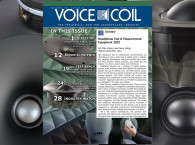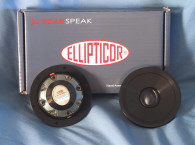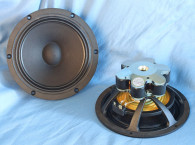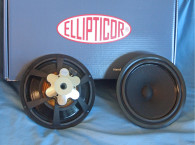
Using an oval (elliptical) voice coil shape to defeat cone and dome standing wave modes is obviously a compelling concept. By driving the diaphragm asymmetrically, what you get is an “infinite” number of Eigen frequencies, but with less contribution for each frequency and overall lower distortion. Driving the diaphragm symmetrically you get a finite number of Eigen frequencies with a higher contribution, combining at certain frequencies producing the coloration modes.
Overall, the D8404 is a large dome midrange with a diaphragm area of Sd=57.8cm2, which is slightly bigger than a 3” diaphragm midrange dome such as the Volt VM752 or the TB Speaker 75-1558SH. The voice coil diameter is 68mm×84mm, so you could think of it as an elongated 76mm diameter round midrange dome.
For a motor system, Scan-Speak basically scaled up its currently successful AirCirc tweeter motor (Photo 2) with 12 neodymium slugs (same as the 15” Ellipticor 38WE), with copper shorting rings and a titanium voice coil former, all part of the patented Symmetrical Drive SD-2 motor format. The motor system is underhung like most dome devices, and has a gap height of 8mm and a voice coil length of 3.2mm for an impressive 2.4mm Xmax, which is maybe 0.5mm less than the typical 5.25” midrange cone driver. It should be noted that this is a seriously beefy midrange dome and weighs in at 11.9 lbs., although that is still lighter than the Volt VM752 with its ferrite motor at nearly 20 lbs.
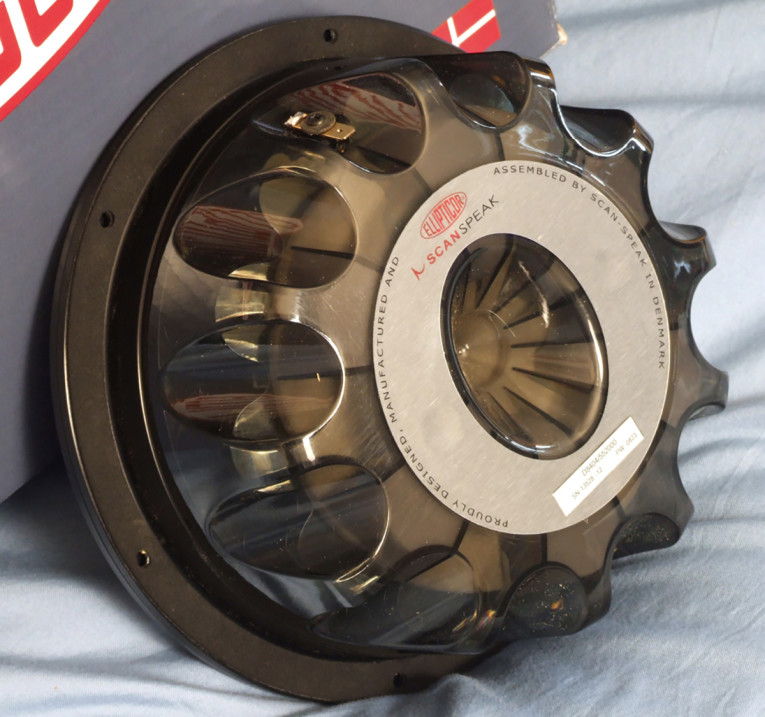
Other features include a coated-cloth elliptical dome, aluminum face plate, clear plastic back cover, gold-plated terminals, and the same very slick aluminum trim ring that covers the mounting screws of all Ellipticor drivers. This “beauty” ring, which can be custom anodized in different colors (like I did on the new hybrid monitor featured in Chapter 14 of the just-released 8th edition of the Loudspeaker Design Cookbook) snaps into place and is held tight through the use of six neodymium (neo) magnets mounted on the underneath side around its peripheral (Photo 3).
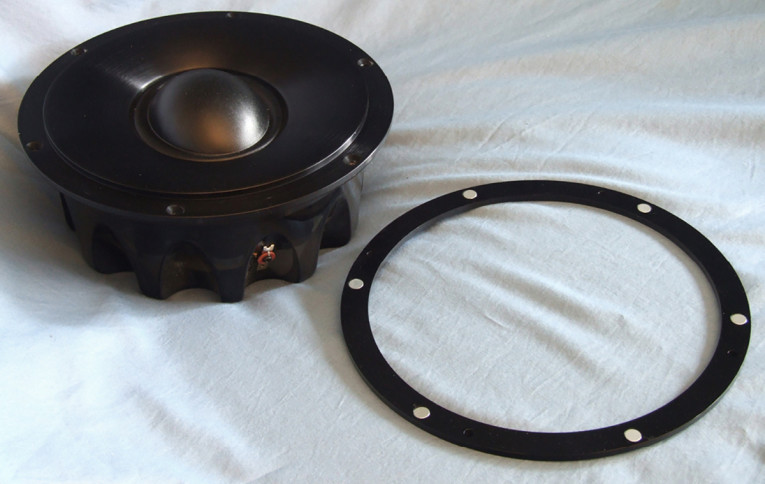
Testing commenced using the LinearX LMS analyzer to produce the 300-point impedance sweep illustrated in Figure 1. The D8404’s impedance resonance occurs at a low 271.4Hz (factory spec is 280Hz). With a 3.22Ω DCR (factory spec is 3.03), with the minimum impedance for this mid dome measuring 3.56Ω at 1.56kHz.
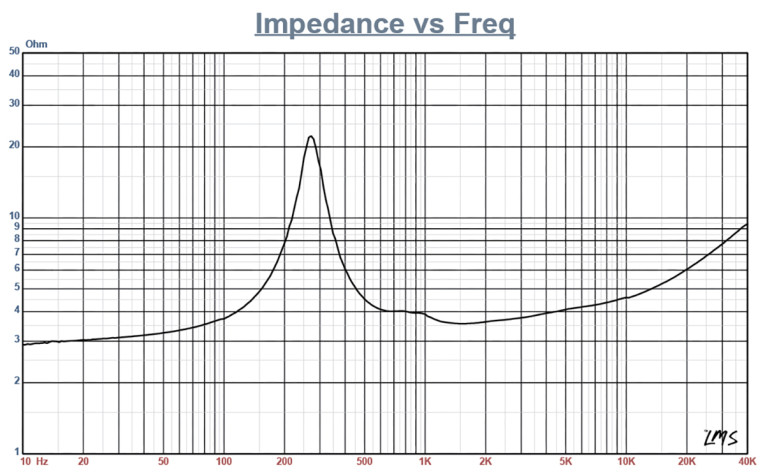
Following the impedance testing, I recess mounted the Ellipticor mid dome in an enclosure that had a baffle area of 24”×14” and measured the on- and off-axis frequency response using the Loudsoft FINE R+D analyzer (courtesy of Loudsoft) and the GRAS 46BE ¼” microphone (graciously provided by GRAS Sound & Vibration). Sweeps were set up to measure the frequency response from 200Hz to 40kHz (using a 192kHz sampling rate) at 2V/0.5m, normalized to 2.83V/1m. Data was then acquired with sweeps at 0°, 15°, 30°, and 45°. Figure 2 shows the on-axis response of the Ellipticor D8404 dome mid, which measured ±2.3dB from 344Hz to 9kHz with no breakup anomalies.

Figure 3 depicts the on- and off-axis (0° to 45°) response of D8404 mid dome, with the off-axis curves normalized to the on-axis response shown in Figure 4. The CLIO 180° polar plot (measured in 10° increments) is shown in Figure 5. These measurements were all made with the D8404 dome in the normal vertically oriented position.

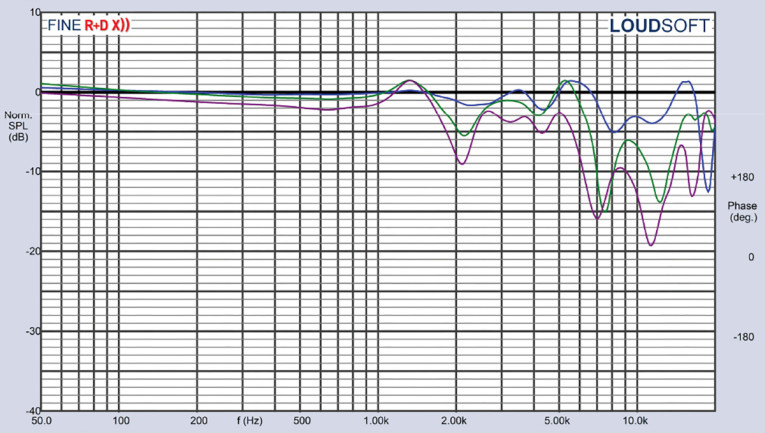

Since the height of the dome is greater than the width, I decided to investigate to see if there was any vertical directivity at play. I compared the two orientations at 30° off-axis (Figure 6) and at 45° off-axis (Figure 7). For both graphs, the black curves are the normal orientation (horizontal axis) and the blue curves are with the dome’s long axis mounted horizontally (vertical axis orientation). Most of the variation comes above 3.5kHz to 4.2kHz, where the response is rapidly declining (entering the driver’s second order roll-off region), so I think vertical directivity due to the diaphragm shape is not really much of a concern (and certainly far less than most AMTs or ribbons).
This is especially true if you were crossing this driver over between 3.5kHz to 4kHz, which is indicated by the off-axis response in order to maintain a smooth directivity index. The last SPL measurement was the two-sample SPL comparison illustrated in Figure 8, indicating the two samples were closely matched to within less than 0.25dB throughout the operation range of the driver to about 4.5kHz.
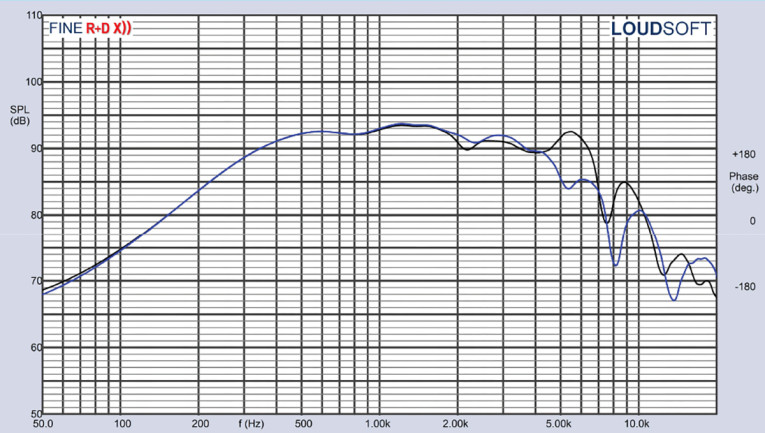
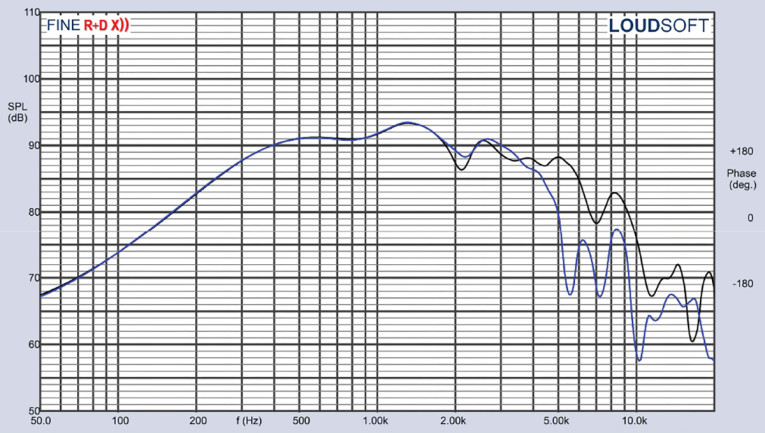
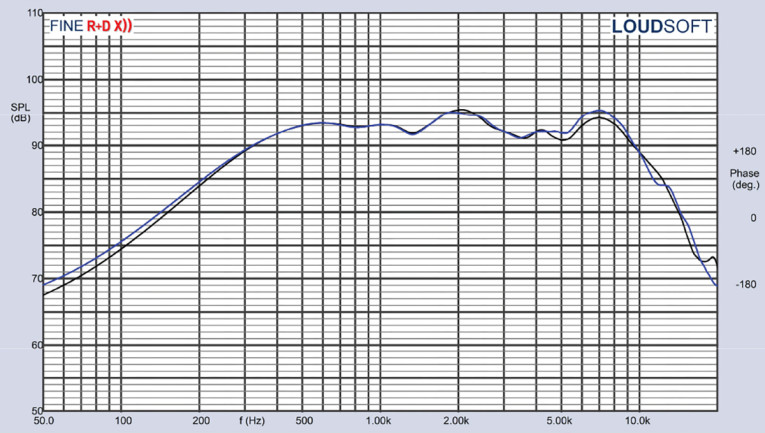
For the next test sequence, I used the Listen AudioConnect analyzer along with the Listen SCM ¼” microphone and SoundCheck 20 software (all provided courtesy of Listen, Inc.) to measure the impulse response with the Ellipticor mid dome recess mounted on the same test baffle used for SPL measurements. Importing this data into the Listen SoundMap software produced the cumulative spectral decay (CSD) plot (usually referred to as a “waterfall” plot), which is shown in Figure 9. While Figure 10 gives the Short Time Fourier Transform (STFT) displayed as a surface plot.

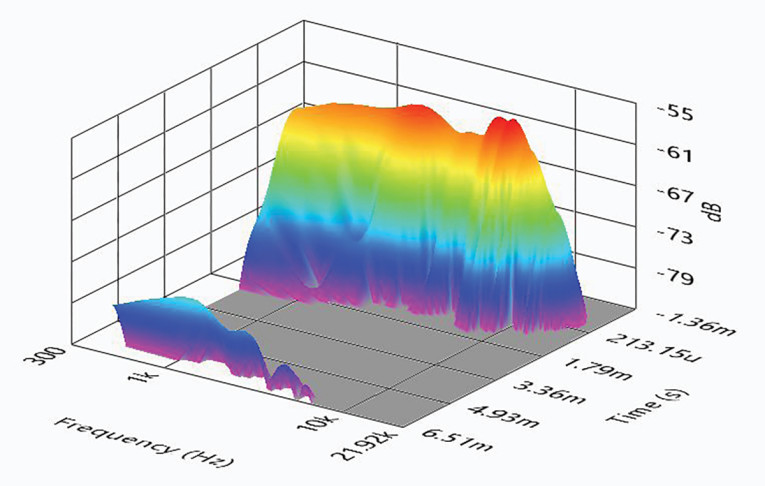
For the last test procedure, I set the 1m SPL to 94dB (3.27V) using a pink noise stimulus, and measured the second (red curve) and third (blue curve) order harmonic distortion at 10cm, depicted in Figure 11. Note the third–order harmonic distortion is extremely low, less than 0.5%.

Given the low coloration aspect of the oval voice coil technology, the new D8404 mid dome is a spectacular new entry for the Scan-Speak Ellipticor line. For more information about the Scan-Speak Ellipticor models and other Scan-Speak product lines, visit www.scan-speak.dk. VC
This article was originally published in Voice Coil, June 2023.




